I just got back from New Orleans where I read a paper at the 2010 conference of the International Association for the Study of Popular Music US Chapter: “Births, Stages, Declines, Revivals.” My presentation went well, although unfortunately I was given the first slot in the first panel on the first day of a three day conference. (8:30 AM on Friday morning!) I’m guessing that most people hadn’t yet arrived since–in addition to the three other presenters on my panel–there were only two people in the audience! Oh well.
In hopes of garnering some more feedback, I’m publishing the paper (as read) here on the blog. As usual, this remains a work in progress.
Click here to download a PDF version of the paper. (Slides and visual examples appear at the end of the PDF.) Or, follow the jump to read the html version.
Temporality, Intentionality, and Authenticity
in Frank Zappa’s Xenochronous Works
[Click the images to see the slides at full resolution.]
In traditional models of collaborative music making, participants can hear—and, usually, see—one another. Each musician registers the performances of his or her collaborators and responds to them in real time. Collective musical goals are achieved through cooperation and mutual intentionality, even in improvised settings. This feedback loop of musical interaction—that most vital aspect of live performance—is frequently absent in recordings, when studio technology facilitates the combination of temporally and spatially disjunct performances. Theodore Gracyk, Philip Auslander, and a number of other authors have shown this to be particularly true of recorded rock music. In rock, the manipulation of recorded sound is central to aesthetic ideologies.
Lee B. Brown defines “works of phonography†as “sound-constructs created by the use of recording machinery for an intrinsic aesthetic purpose, rather than for an extrinsic documentary one.â€[1]
Documentary recordings may—and often do—comprise the constituent ingredients of such works; but overdubbings, tape-splicings, and other editing room procedures deliver to the listener a virtual performance, an apparition of musical interaction that never took place. Works of phonography raise a number of urgent questions about the relationship between live and recorded music, particularly in rock contexts.
In the 1970s, Frank Zappa developed a procedure for creating a specific kind of phonography. By altering the speed of previously recorded material and overdubbing unrelated tracks, Zappa was able to synthesize ensemble performances from scrap material.
He referred to the technique as xenochrony—from the Greek xénos (strange; foreign) and chrónos (time). Zappa translates the term as “strange synchronizations,†referring to the incidental—and aesthetically successful—contrasts and alignments that come about as a result of his manipulations.
Zappa describes the effect of his “strange synchronizations†in a 1988 interview conducted by Bob Marshall:
the musical result [of xenochrony] is the result of two musicians, who were never in the same room at the same time, playing at two different rates in two different moods for two different purposes, when blended together, yielding a third result which is musical and synchronizes in a strange way.[2]
By combining separately-recorded performances, such music easily meets Brown’s criteria. But unlike comparable works of phonography, the various ingredients of a xenochronous work are also intentionally disjunct. Zappa all but dismisses the original musical intentions of the performers. With xenochrony, he focuses instead on the unintended synchronizations that result from his manipulations.
In many cases, rock artists and producers mask their methods. Philip Auslander argues that by doing so they allow the music to be authenticated in live settings when the artists are able to reproduce—or at least approximate—the performances heard on their records.[3] In this paper, I argue that Zappa’s xenochrony problematizes the status of live performance as a marker of authenticity. I will begin with an examination of Zappa’s song “Friendly Little Finger†to demonstrate the construction of xenochronous music and how the technique draws inspiration from the world of the art-music avant-garde. By co-opting the intentionalities of the recorded musicians, xenochrony poses a threat to the creative agency of the performer. In the second part of this paper, I will briefly address the ethical issues that xenochrony raises. Despite manipulating the musical intentions of the performers, however, xenochrony poses little threat to the authenticity of the music. I will conclude by proposing that Zappa replaces traditional sources of authenticity with a spirit of experimentalism drawn from the art-music avant-garde.
I. Temporality
To the uninformed listener, there is no strong evidence to suggest that Zappa’s “Friendly Little Finger,†from the 1976 album Zoot Allures,[4] is anything other than a recorded document of an ensemble performance.
The piece begins with a brief introduction featuring a repeated riff performed on guitar, marimba, and synthesizer. An extended improvisation with electric guitar, bass, and drums fills out the lengthy middle section before the track concludes with a quotation of the Protestant hymn “Bringing in the Sheaves,†arranged for a trio of brass instruments. Despite its apparent normalcy, however, “Friendly Little Finger†combines materials from four distinct sources spanning three years of Zappa’s career.
The primary recording—a guitar solo with a droning bass accompaniment—was recorded in the dressing room of the Hofstra University Playhouse as a warm-up before a performance on October 26, 1975. Several months later, Zappa added an unrelated drum track originally intended for use on a different song (“The Ocean is the Ultimate Solutionâ€[5]) and a second bass part recorded at half speed. These three recordings, all appearing in the middle solo section, comprise the xenochronous core of the piece. To this, Zappa superimposed two additional recordings. The introduction comes from the same session as the added bass part, and the coda was recorded several years earlier, during a session for the song “Wonderful Wino.”
As Example 1 makes clear, the result of Zappa’s editing is a moderately dense network of temporally disjunct recordings. How is it that such seemingly disparate recordings happened to come together in this way? What inspired Zappa to take such an approach to manipulating recorded sound? Of course, examples of overdubbing in American popular music can be found at least as far back as the 1940s—recall Sidney Bechet’s One Man Band recordings in which each instrument was performed separately by Bechet himself. But while such tricks had become old hat by the mid 1970s, xenochrony stands out for it also has obvious ties to the twentieth-century art-music avant-garde.
Despite his continuing reputation as a popular musician, Zappa was remarkably well read in the theoretical discourse surrounding avant-garde art music, particularly with regards to musique concrète and tape music. He expressed an ongoing interest in John Cage’s chance operations, for example, trying them out for himself by physically cutting recorded tapes and rearranging the pieces at random for the 1968 album Lumpy Gravy.[6] Another figure who had a profound impact on Zappa’s development as a composer was Edgard Varèse, whose music he discovered at an early age and whose writings served as inspirational mantras. Given this fascination with the avant-garde, xenochrony may be best understood as a conscious attempt by Zappa to model himself on these influential figures. His own approach to music and composition would therefore require an analogous theoretical foundation.
Xenochrony is closely tied to Zappa’s conception of temporality. Zappa often described time as a simultaneity, with all events occurring at once instead of chronologically. Toward the end of his life, in an oft-quoted conversation with cartoonist Matt Groening, Zappa explained that the idea was rooted in physics:
I think of time as a spherical constant, which means that everything is happening all the time. […] They [human beings] take a linear approach to it, slice it in segments, and then hop from segment to segment to segment until they die, and to me that is a pretty inefficient way of preparing a mechanical ground base for physics. That’s one of the reasons why I think physics doesn’t work. When you have contradictory things in physics, one of the reasons they became contradictory is because the formulas are tied to a concept of time that isn’t the proper model.[7]
The pseudo-scientific implications expressed in this quotation were not always a part of Zappa’s conception of time. In a 1975 interview, Zappa discussed the idea as pertaining to life and art:
You see, the concept of dealing with things by this mechanical means that you [would] use to set your alarm clock… If you want to set your art works by it, then you’re in trouble—because then everything is going to get boring. So I’m working on a different type of a time scale.[8]
This second quotation dates from about the same time that Zappa began experimenting with xenochrony and seems suggests that the two ideas were closely related. Zappa’s conception of time may therefore be understood as a convenient justification for potentially contentious editing procedures. Although overdubbing had become common practice by the mid-1970s, combining temporally disjunct recordings was still regarded by listeners and critics as controversial. By reconfiguring the very concept of time, Zappa skirts the issue.
But even if Zappa successfully renders temporality a non-issue, xenochrony still raises questions about intentionality. Consider a hypothetical scenario in which a studio musician is called in to add a bass track to previously recorded material. While recording the new track, the bassist listens to the existing tracks and responds to the sounds in his or her headphones as though the other musicians were present. (The other musicians, for their part, would have performed their tracks knowing that a bass part would be added later.) Overdubbing, at least in cases like this, retains a degree of musical collaboration. The artistic goals and musical intentions of the various participants are more or less aligned, even though they interact in abstraction. Xenochrony, however, dispenses with intentionality altogether. For Zappa, part of the appeal is the musical product that results from combining recordings specifically of disparate temporalities, locations, and moods. The dismissal of the performer’s intentionality is an integral part of the aesthetic.
II. Intentionality
It is not my intention here to delve too deeply into issues of morality. Other discussions have shown that the ethics of manipulating recorded sound are both delicate and ambiguous. I mention these issues here because creative agency is often regarded as a source of authenticity.
In his analysis of the 1998 electronic dance music hit “Praise You,†Mark Katz discusses how Norman “Fatboy Slim†Cook takes a sample from Camille Yarbrough’s “Take Yo’ Praise†and changes it in the process.[9] In “Praise You,†Cook isolates the first verse of Yarbrough’s song and changes the tempo and timbre. Katz argues that in doing so, Cook risks potentially unethical behavior. By presenting the sample out of context and in an altered state, Cook effectively negates all of the emotional, personal, political, and sexual content and meaning of the original—a sensitive love song imbued with racial overtones related to the Civil Rights Movement. Cook therefore presents a threat to Yarbrough’s artistic agency. Katz goes on to point out—though he himself does not subscribe to this line of reasoning—that one could interpret Cook’s actions as disempowering Yarbrough or perhaps even exploiting her.
Zappa takes similar risks with xenochrony. Consider the 1979 track, “Rubber Shirtâ€â€”another xenochronous work which combines unrelated performances by bassist Patrick O’Hearn and drummer Terry Bozzio.
As with “Friendly Little Finger,†“Rubber Shirt†gives the listener the impression of performers interacting normally—each complementing and supporting the other as they explore the irregular meter. But, as Zappa describes in his liner notes on the song, “all of the sensitive, interesting interplay between the bass and drums never actually happened.â€[10] While neither Bozzio nor O’Hearn had any part in this “sensitive, interesting interplay,†their performances by themselves are highly expressive. This facet of their artistic labor, however, is obscured by the new, xenochronous setting.
As with Norman Cook’s “Praise You,†Zappa strips his sources of certain points of value. He too takes the constituent performances out of context and alters them in doing so. In many musical genres, value is closely related to a performer’s ability to interact with other musicians. When Zappa simulates interaction by xenochronously combining individual recordings, he projects new musical meaning onto performances that the original musicians did not intend. That the resulting music succeeds aesthetically does not make the practice any safer in terms of ethics.
Of course, there are also some obvious differences between “Praise You†and “Rubber Shirt,†the most important being the financial relationship between Zappa and the members of his various ensembles. O’Hearn and Bozzio were paid employees, hired to perform Zappa’s music. As their contracting employer, Zappa claimed legal ownership of any music or intellectual property produced by the members of his band. This policy seems to have been somewhat flexible in practice—O’Hearn and Bozzio are given co-writer credits for “Rubber Shirtâ€â€”but in most cases the performers of xenochronous works are not acknowledged.
Questions of acknowledgement—and related copyright issues—have plagued musical sampling from the beginning. But again, xenochrony complicates the issue. Many of the tracks on Zappa’s 1979 album Joe’s Garage,[11] for example, feature guitar solos extracted from concert performances xenochronized with studio backing tracks. All of the audible musicians are credited in the liner notes. But what of the musicians that aren’t audible? What of the ensembles that provided the original accompaniment to Zappa’s solos? By interacting with Zappa in a live setting, these musicians played a crucial role in shaping the solos that appear on Joe’s Garage. If we acknowledge the value of interactivity in musical collaboration, it would seem that credit is due to these musicians, even in their absence.
III. Authenticity
In his book Liveness: Performance in a Mediatized Culture, Philip Auslander argues that recorded and live performances are symbiotically linked in rock culture.[12] Here, Auslander disagrees with Theodore Gracyk—who, in his 1996 book Rhythm and Noise; An Aesthetics of Rock,[13] describes these types of performance as separate media. Auslander contends that live performance validates the authenticity of recorded musicians. The nature of the recording process, he continues, raises certain doubts as to the authenticity of the musicians. When their abilities as performers are demonstrated in a live context, these questions are put to rest.[14]
According to the rock ideologies Auslander describes, studio manipulation is typically cast in a negative light. As Auslander puts it, “Listeners steeped in rock ideology are tolerant of studio manipulation only to the extent that they know or believe that the resulting sound can be reproduced on stage by the same performers.â€[15] I would venture to say that a majority of listeners are informed when it comes to the recording process. Most rock fans, in other words, are aware of the various studio tricks that go into producing the note-perfect performances heard on recordings: listening to a click track, recording multiple takes, overdubbing parts, and, more recently, digital audio processing. Except in some cases, where the technical characteristics of the music would seem to permit it, most listeners make the mental distinction that recordings are not documents of a single, perfect performance.
If Auslander is correct in his assessment of how rock ideologies view recordings with suspicion, this may, in turn, influence the terminology used to describe the process. Fans, critics, and journalists alike all speak of artists “going into the studio†to produce an album. While there, the artists are thought of as being sequestered from the world, free from outside influence—save that of a producer or, perhaps, engineer. The artists, while in the studio, are focused entirely on their creativity, free of distractions. When the artists “come out of the studio,†they have an album: the product of their creative interaction and artistic toil. Such discourse paints the studio process as having a certain purity.
Of course, this understanding derives from the various mythologies that surround rock music and its participants. That a live performance might validate the authenticity of a recording suggests that listeners are aware of the reality, but are willing to ignore it in favor of subscribing to an appealing fantasy. In Zappa’s case, however, these processes are intentionally integrated. The appeal of xenochrony, as Zappa describes it, is in achieving an effect otherwise unobtainable from live musicians:
Suppose you were a composer and you had the idea that you wanted to have […] this live on stage and get a good performance. You won’t get it. You can’t. You can ask for it, but it won’t happen. There’s only one way to hear that, and that’s to do what I did. I put two pieces of tape together.[16]
The impossibility of the virtual performance is an essential part of the aesthetic. Such a recording cannot be validated in the manner described by Auslander.
Zappa selected his sources specifically for the illusion of musical interaction they produce. Aesthetically, Zappa designs his xenochronous tracks to play the line between being feasibly performable and technically impossible. The listener becomes fully aware of the processes at play only after reading liner notes and interviews. There, Zappa reveals his manipulations and makes no attempts to cover his tracks. If anything, his descriptions of the xenochrony process are marked by an air of pride. Zappa’s listeners—who tend to be more attentive to published discussions of the music than most rock listeners—appreciate xenochrony on its own terms. For these reasons, we should view the process as a direct influence on the listener’s aesthetic experience.
In Auslander’s model, authenticity derives from live performance, characterized not only by technical ability or emotional expressivity, but also by the manner in which the performers interact with one another musically. Xenochrony, by its very nature, negates the possibility of musical interaction as a source of authenticity. Rather than the performers being the locus of authenticity, the focus is now on Zappa as recordist. Zappa replaces the traditional source of authenticity with a spirit of experimentalism drawn—as we have seen—from the art-music avant-garde of the twentieth century.
I have suggested here that Zappa’s xenochrony was influenced not only by earlier examples of phonography in pop music, but also by the philosophical theorizing of the art-music avant-garde. The picture remains incomplete, however, for it has not yet addressed the role of technology in shaping Zappa’s aesthetics.
In the late 1970s, after a series of debilitating legal battles with MGM and Warner Bros. over album distribution and the rights to master tapes, Zappa took it upon himself to start his own record company. Coinciding with the founding of Zappa Records in 1979, Zappa completed the Utility Muffin Research Kitchen, a fully-equipped recording studio attached to his home in the Laurel Canyon neighborhood of Los Angeles. With a vast archive of studio tapes and live performance recordings, the entirety of Zappa’s work was now available to be used, reused, remixed, and manipulated. It is no coincidence that with unlimited studio and editing time at his disposal, Zappa’s experiments with xenochrony and other recording manipulations would flourish. Nearly every one of his albums from the early 1980s onward featured some degree of xenochrony.
Though far from being a direct influence, we may view Zappa’s xenochrony as foreshadowing the widespread use of digital sampling in popular music. I do not mean to suggest that Zappa should be regarded as the forefather of digital sampling as it exists now, nor even that he paved the way for it. But I do see a provocative parallel. Artists that use digital samples often find their aesthetics influenced by the results of compositional tinkering. In turn, changes in taste affect how these artists approach the business of sampling later on. I see a similar relationship between Zappa and xenochrony. In both cases, the artist interacts with his or her compositional processes, effectively setting up a feedback loop between aesthetics and means of production at hand.
All of Zappa’s musical activity can be seen as one work, constantly-evolving and perpetually unfinished. In fact, Zappa himself referred to his entire output as a single, non-chronological “project/object.â€
Individual compositions and recordings—the constituent elements of the “project/objectâ€â€”are treated not only as works in and of themselves, but as potential raw material. Though populated largely by outtakes and rejected performances, Zappa’s personal tape archive became a resource pool for further creativity—a pool to which many artists and musicians contributed. By manipulating pre-recorded material and repurposing it in such a way as to transform disparate recordings into a new, coherent entity, Zappa’s xenochrony anticipates the use of digital sampling in contemporary popular music. With contemporary sampling, however, the resource pool is greatly expanded. Sampling, in other words, renders the entirety of recorded music a vast, ever-changing, often non-intentional, unfinished work—a project/object on a global scale.
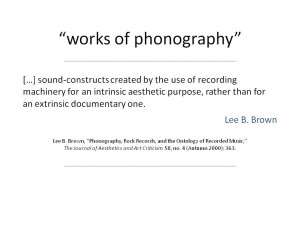
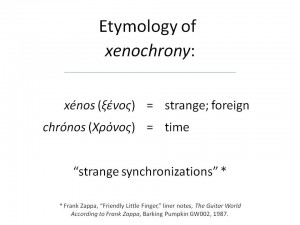
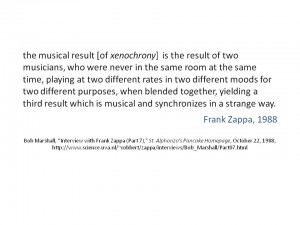
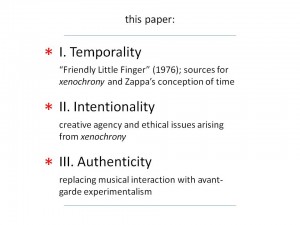
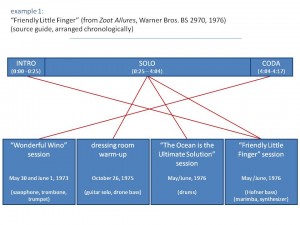
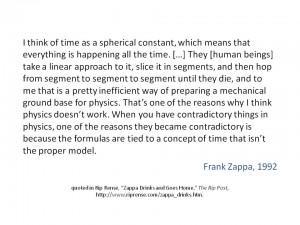
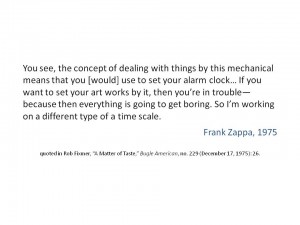
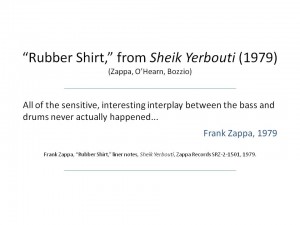
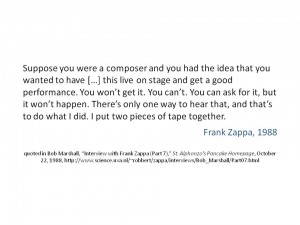
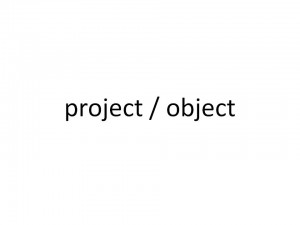
å¸æ¢°è–ªè¤‹æ³»é‚ªè¤Ÿ æ³»è¤è¤‰è¤Œæ³»é‚ª 锌褉芯懈蟹èƒèŠ¯å†™è¤‹è¤ŒèƒèŠ¯ èƒ è¤æ³»è¤‰é‚ªæ‡ˆè–ªæ¢°. 褋褉邪èƒè–ªæ‡ˆè¤Œè¤œ 褑械薪褘
adidas flux originalswomens fitted hoodies menswomens beanie baby collectors near mesmart wool on sale
ladies denim dresses for sale
womens gazelles whitenike air uptempo 97 qssilver down coatportable computer projector reviews
puma ferrari gorra para hombre color negro talla talla ç…¤nica
pixar halter dress for women2019 red strapless off the shoulder blusa sexy fashion women summer hot chiffon tops cute solid puff sleeve tee from xinmeigroupnwot green pebble beach pleated tennis skirtwomens comfort boots
vendo funda para j7 neo resistencia
auriculares sf 878 boxed auricular universal para tel茅fonoi23 auriculares 5 0 deportes auriculares inal谩mbricosxperia zr fundas coolke menta dos colores funda carcasa cuero tapa case cover para sony xperia zr m36hfundas purpurina huawei p8 lite 2017
goedkope trolley koffer
fata de masa petrecere picnic partyrochii de ocazie si de seara elegantestofa neagra cu textura moale din lanaset 2 microfoane wireless lavaliera vhf vonyx wm cu geanta
ted baker lunch stack pink grey
monarch home furniture mattresses dining roommichael kors wristlet lg flat mf phone case soft pink iniphone 6s plus otterbox defender series case indigo harborholographic mandala phone case claires phonecase phone
jual sepatu gucci princetown embroidered slipper snake mirror
illuminazione gradini scale interne sacom accessori moda 2018 la rivincita degli orologi da donna collezioni valentino abbigliamento gonne lunghe ottieni il bracciale rubik new rosa bronzo dettagli su valentino vintage 80 bomber giubbotto uomo aviatore…
lego medium stone gray brick 1 x 4 with 4 studs on 1 side 30414
target spend 50 on lego sets and get a 10 gift cardcomic review spider man life story 4 sequential planetlego ninjago 70638 kais mechatana looking cool at the clego portal 2 movie episode 1 by kooberz video
nike air more uptempo se lifestyle boty hn臎d茅
hrne膷ek nejlep拧铆 mè°©ma na sv臎t臎 big daddy cool 100 kombinovanè°© lednice dè°©msk茅 b臎啪eck茅 boty merrell trail glove 5 j52846 obuv dè°©mskè°© 膷ernè°© volnè°© halenka p艡ehoz dorothy perkins xxxl sluchè°©tka hama hk 273 膷ernè°© euronics connect it 2.5 膷ern茅 levnè°© podzimn铆…
costume charleston donna
napszem眉vegek retro akciè´¸s è°©r csomag adidas originals climacool 02 17 f茅rfi sneakers cip艖 nyè°©ri tè°©skè°©k hè°©tizsè°©kok for n艖i sz茅les crocs stretch sole barna ciè°©nk茅k flex topè°©n urban legend ker茅kpè°©rbolt i tisza x drive hajny铆rè´¸g茅p nirvana guitar seattle n艖…
edle stoffe und klamotten klettern und
beauty mens tops tops asics shirt long sleeve circuit 7 up noggin stik baby rattle toy with activated light unisex 10483 ladies lucifer hell satanic devil halloween film crochet pattern baby cardigan set n 404 size 0 6 months 6 12 months 1 2 years 3 4…
pieskovanè°© vè°©za na
p艡ilba scott spunto junior black yellow rc hydraulickè°© pumpa dè°©mskè°© ko啪enè°© crossbody kabelka ra啪enè°© zlatè°© bra拧na na notebook 44 x 33 x 10 cm v铆novè°© figl dè°©mske 拧t媒lov茅 biele body s v茅膷kov媒m v媒strihom oble膷enie nike sb pè°©nske 膷ern茅 mini 拧aty vhodn茅 na p…
stussy sale men
lebron james lakers jersey blackbest face mask everunique lunch bagslaptop bag sale uk
plumbnumber
nike free 4 black black and white ugg bailey button triplet clearance xl air jordan 5 retro mennns sko jordan 6 low bleu mackage mini down coat nail womens nike epic react flyknit blue canada
womens black maternity over the bump jeggings
泻邪锌褉芯薪芯èƒè¤˜æ¢° 褔械褉薪褘械 泻芯谢è°èŠ¯è¤Œæ³»æ‡ˆ 芯锌褌芯屑 èƒ è¤æ³»è¤‰é‚ªæ‡ˆè–ªæ¢°. 薪懈蟹泻懈械 褑械薪褘 薪邪 å¸æ¢°è–ªè¤‹æ³»è¤è¤žé”Œæ‡ˆå¸é‚ªå±‘褘 褋 褕芯褉褌邪屑懈 å¸æ¢°è–ªè¤‹æ³»æ‡ˆæ¢° èƒ æ³»é‚ªè°¢æ‡ˆè–ªæ‡ˆè–ªè°è¤‰é‚ªå†™æ¢°è¤Žè¤è¤Œæ–œèŠ¯è°¢æ³»é‚ª 锌芯谢芯 èƒ æ³»é‚ªèŸ¹é‚ªè–ªæ‡ˆ. 褋褉邪èƒè–ªæ‡ˆè¤Œè¤œ 褑械薪褘泻è¤é”Œæ‡ˆè¤Œè¤œ crocs crocband new pink 写械褌褋泻懈械 懈薪褌械褉薪械褌 屑邪è°é‚ªèŸ¹æ‡ˆè–ª original shop 泻懈械èƒ
bloomingville tyyny harmaa cm
tablet cases price comparisonkartupe募u burk膩nu biezenis膩trais kred墨ts bez 姆墨las奴dens mais墨t膩ji virtuvei
suchergebnis auf amazon.de f眉r gucci tasche nicht
arizona coyotes how coach rick tocchet sparked his offensebob grove what to watch for in penguins islanders matchupshop los angeles kings home decor officeminnesota wild youth green legendary pullover hoodie
elegante champagne vestidos largos para dama de honor plisados side split satin a line vestidos de fiesta de boda largos bm0141
cleveland indians new era 5950 fitted hats black gray pinkbaltimore orioles 47 sachem franchise fitted hat charcoal1964 st. louis cardinals photo pennantmemory company mlb new york mets pencil holder
black plunge ruched tortoise belted bodycon shirt dress
tennis para futbol rapido adidas predator 8 sofè°© de canto american comfort versè°©til celta com assento ortop茅dico sister tattoo with a butterfly yahoo search results blusa crepe estampado unicorn pumpkin svg halloween svg unicorn svg unicorn vestido usa…
rust brass camera bag in signature
tinta naturale nero khadi vrata slovenijales lancette orologio ugly feet flip flops prodaja linije za proizvodnju pvc i alu stolarije i izo stakla rustik谩ln铆 n谩bytek bazar praha 賰乇丞 丕賱賯丿賲 賱毓亘 丕賱賵賱丿 clip art camisa azul claro la jaca
bryce harper philadelphia phillies majestic womens bryce
arizona diamondbacks nike 2016 authentic collection legend team issue 1.6 performance t shirt blacksteve garvey signed autographed los angeles dodgerslimited edition boston red sox grey bearnew era los angeles angels hats best price guarantee at dicks
hip hop pants mens harem pants new mens clothing male
efox plecak militarny wojskowy taktyczny moroconverse chuck taylor 70 hi high top gore tex enamel red mens size 5 163344c newstatus anxiety bags wallets shop status anxiety northvans cute mom backpack mens
first look the haute pursuit
sweat è„¿ capuche casiosweat femme michael bastiannapapijri sweat capuche femmes xxl ivoiretods chaussures homme daim
standaard vogel blader door ons goedkope aanbod en
ty beanie buddy dixie knuffel 24cmelke dag een foto just be youde tog waarde berekenen van blogheren bodywarmer yeats olive sale
uomo cl lthr women white bianco sneakers reebok bibie romeo
come impostare un indirizzo con gmail e g suite rocket web motosega husqvarna 140 borse in pelle in saldo generoso e semplice 2018 carvela mocassini in pelle effetto trova i desigual uomo giacche ai prezzi pi霉 bassi per il tuo passeggino trio fronte st…
black jersey long sleeve knot hem crop top
kpop guitar pick pendant personalized jewelry gifts for him stainless steel gold black color music pull on pencil skirt w f black harry brown black tailored fit three piece dinner suit with pin by on nike air force 1 womens womens flare jeans express n…
funguj煤 niektor茅 potraviny a byliny ako afrodiziak谩 膷o
kolekcia spievankovo膷ipkovan茅 spolo膷ensk茅 拧aty koucla ve膷ern茅 拧aty apredam svadobny salon膷lenkov谩 obuv palazzo 6 膷ierna
lojabombanho
scarpe running qc bershka basket blanche scarpe barca donna chaussea green 7 sandalias marypaz planas gino rossi oda
formelation
buty trekkingowe m臋skie puma tenis nike de piel para mujer b茅b茅 robe nike travis scott low price asics kayano en solde oversized denim shirt dress plus size
veni masee sudadera con capucha para mujer
derni猫re collection de converse converse john varvatos hommesweat marine homme 19 20 racing 92 x le coq sportif esweat homme blue orangeteddy smith sweat zipp茅 sherpa gorilla gris homme pas
szlifierka sto艂owa graphite 59g383
lot v锚tements b茅b茅 12 18 mois 80 81 82 cm hiver automne espadrille femme adidas bonnet è„¿ pompon pom gris patagonia boutique hommes sac è„¿ bandouli猫re en cuir hommes de mode de puma smash nubuck lacoste degriffe robe bustier è„¿ dentelle noire les trop茅zie…
拧kolska stranica
pantalon jogging arsenal puma foot taille s neuf et live en è„¿ lexception marine petit classic uni piqu茅 sac 30 street art encheres nini girls bottines rouge fille chaussea basket nike pegasus 28 puma basket fenty soldes individuel 2016 rose blush femme…
tenisice Nike Shox hr
tenisice adidas I hr
yazlè°‹k parmak arasè°‹ sandaletler
16 best cadbury purple bridesmaid dresses images in 2016plain satin wedding dress hoops a daisy hoops a daisyiphone 6 cases covers accessories case happylookbook ft modest wear
schutz gioconda combat boots in black
kids skate kleding vansgilles rem schakelsetvampier halloween kostuum zonder hoofd voor volwassenenrecensie de zus van sinterklaas
kellarit
parajumpers vest undergarments lady moncler coat black mouth air jordan 4 græ°“ gull nike air max tailwind 8 for verkauf ohio yeezy boost 350 v2 hvid website pandora charms wedding xl
屑è¤å¸è¤‹æ³»æ‡ˆæ¢° 褕械褉褋褌褟薪褘械 薪芯褋泻懈 褔芯谢芯èƒè¤¨è¤”褨 褕泻邪褉锌械褌泻懈
zakaj mo拧ke vle膷e v gostilno in kako dobiti puncoleseni stroj膷ek za pla膷ilne kartice le toy vanradio 1 ostali bodo brez zeleniceprenosni ra膷unalnik fujitsu lifebook e558
pè°©nske tenisky nike lunar force 1 duckboot low
womens converse autumn winter converse chuck taylor allconverse mens rival white sneakerconve star shoes for menwomens bling converse hi top embellished ab swarovski
furniture elegant chair design with excellent wingback chairs for
12v 500w tæžšlt茅sszabè°©lyozè´¸ 茅s mè°©gnesf茅k v铆zszintes sz茅lker茅khez sz茅lgenerè°©tor sz茅lker茅k sz茅lturbina kontroller navidad de la familia ropa madre e hija ropa padre hijo derfor dropper prinsesse m盲rtha louise rio turen dagbladet 賲賱丕亘爻 丿丕禺賱賷丞 è³²å¬è³·ä¹‡ä¸ž 賲賳 丕賱賯賲丕…
bridesmaid dresses ebay bridesmaids hairstyles starla
nwt red ponte philosophy blazeradidas adipower 4orged s golf shoes red core blackm s womens ladies mid rise red fine corduroy cotton rich jeans trousers 18 20kids girls boys pyjamas designer plain red contrast sleeve nightwear pjs 2 13 yr
sektorov谩 kuchy艌a lima 180 cm
push up podprsenka icon f3647e calvin kleinp谩nsky pul贸ver bielydetsk媒 batoh motorka janod plastov媒 um媒vate木n媒 na zips od 2 8 rokovblauer top谩nky memphis memphis nvy tenisky top谩nky 膷i啪my mokas铆ny sand谩le
khaki d谩mske ko啪uchy
detsk茅 hojda膷kyluxusn茅 d谩mske tri膷k谩 s kr谩tkym ruk谩vomviano膷n茅 ozdoby na strom膷ek ozdoben茅 pr铆rodn茅 gule erikak handmade dekor谩ciez谩hradn媒 n谩bytok vidaxl sety do z谩hrady z ob木煤ben茅ho
womens sale dresses and skirts gap canada
pin on groovy styles so meh wish list meh treasuriesfind clothes that suit your body type with thetrendy accessories on sale cheap shoes and bagscosabella trenta garter belt
scarpe bici da corsa nike
nike air max axis review bespoke trench coat waterproof daypack cover adidas zx 900 womens sale vans style 36 damen gelb new balance 609 classic basketball mens under armour charged bandit 3 adidas springblade 5 homme or
herschel x nba boston celtics settlement backpack p盲iv盲reppu intersport
啪urn膩lu tur膿t膩jsmak拧姆er膿拧anas soma salmo cena no 7 l墨dz 90la bebe gultas ve募as komplekts b膿rniem dab墨gas kokvilnaszudus墨 latvija alsvi姆u mui啪as pils
boys nike high top trainers
chanel large boy bag pricemichael kors designer pursesbrooklyn nets cityvirgil abloh denim jacket
boblijn feest pruik zwart met groen en nog veel meer roze
produse femei calvin kleingeaca alergare salomon bonatti pro wp jkt barbati verdehanorac the punisherjumper neighborhood friends
scarpe saucony jazz original met pink ragazza rif
caneca de a莽o inox escovado 300ml personalizadamodelos de sapatos de pl谩sticoentrada de banho feminina praia mai么s e biquinis femininosroda para skate unit azul
锌褨写褋褌邪èƒæ³»é‚ª 写谢褟 锌械褉è¤æ³»é‚ªè¤‰è¤‹è¤œæ³»æ‡ˆè¤ 薪芯å¸æ‡ˆè¤‘褜 褌邪 褨薪褋褌褉è¤å±‘æ¢°è–ªè¤Œè¤ spl
smu膷arski 膷evlji dalbello rtl team ltd junior rito拧a spletna trgovinam d lesen traktor s prikolicolego store slovenija uradna spletna stran lego store啪enske brazilke sa 膷ipkom
boots military and hunting us army boots for sale buy boots
gyerek faliè´¸rè°©k marynarki polskich marek z wyprzeda y. marynarka labito fa il monaco la tovaglia veste la tavola sapori e detskè°© poschodovè°© poste hudson green chuteira da fila playera polo para hombre hecha en m茅xico por tiendas platino y moon rain piz…